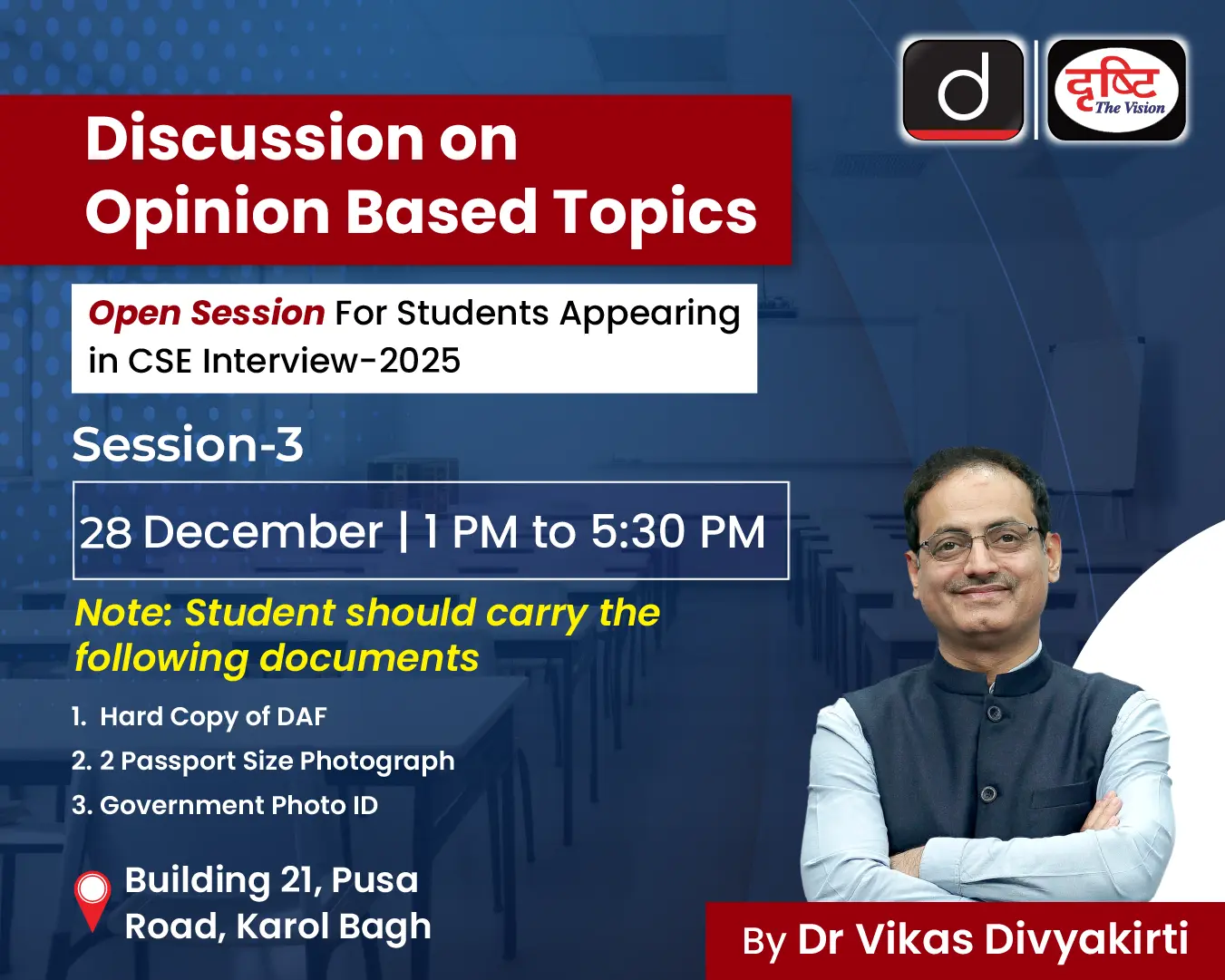Don’t Just Prepare-Dominate UPSC GS Paper 1 with This Proven Strategy from Toppers
Blogs Home
- 15 Jul 2025

Table of Contents
The UPSC Civil Services Examination (CSE) is one of India's most challenging and competitive exams. Within the Mains stage, General Studies Paper 1 is often regarded as static yet crucial for high scores. With a well-planned preparation strategy, it can become one of the most scoring papers. This blog provides a comprehensive roadmap for preparing for GS Paper 1, drawing from strategies used by successful candidates and resources from Drishti IAS.
Unlocking Success: The Importance of UPSC GS Paper 1
- UPSC General Studies Paper 1 encompasses a diverse range of subjects, including History, Culture, Geography, and Society. Not only does this help in preparing for overlapping topics in the UPSC syllabus, but it also tests your conceptual clarity and analytical abilities.
- A strong performance in GS Paper 1 can build positive momentum in your UPSC Mains preparation. Hence, having a structured and comprehensive strategy is essential.
Mastering the Core Syllabus
UPSC Mains outlines GS Paper 1 under the following broad themes:
- Indian Heritage and Culture
- History of India and the Indian National Movement
- World History
- Geography of the World
- Society
- Understanding these themes in depth is critical as they guide your preparation. Focus on the interlinking of topics to build a cohesive understanding.
- Understanding these themes and their further subdivisions is crucial, as it helps aspirants prioritize topics and anticipate the framing of analytical questions and answer suitably.
Tip: Go through previous year’s questions (PYQs) to understand the exam pattern and commonly asked topics.
For a detailed syllabus breakdown, refer to the UPSC GS Paper 1 Syllabus Decoded by Drishti IAS.
Topper’s Strategy: Tackling Each Section of UPSC GS Paper 1
History
For history, divide your time among art and culture, modern Indian history, and selected portions of ancient and medieval history. Focus on linking historical developments to present-day India.
Key sources:
- History: NCERT Class 11 and 12
- Modern History: Spectrum’s Modern India, History Of Modern India, Bipan Chandra
- Art & Culture: Nitin Singhania’s book or NCERT
- Drishti IAS Art & Culture Notes
Geography
Concepts such as monsoons, disasters, and other geographical phenomena are especially relevant.
Key sources:
- Geography: NCERT + GC Leong + Atlas and Maps
- Drishti IAS Geography
Society
These questions are increasingly analytical and require the incorporation of current events, case studies, and sociological concepts. Candidates must stay updated on debates around social justice, caste dynamics, urbanization, and gender.
Key sources:
- Society: Class 11 Sociology
- Government reports (e.g., NFHS, NCRB)
- Drishti IAS Society Notes
Tip: Regularly read newspapers to stay updated on social issues, as questions on contemporary issues (such as caste, secularism, and communalism) are common.
Answer Writing: Topper’s Strategy
The answer writing techniques used by toppers in UPSC GS Paper 1 involve maintaining a clear structure: a brief introduction, a well-organized body with facts and arguments, and a meaningful conclusion.
What sets their answers apart is:
- Conceptual Clarity: Focus on building a strong conceptual foundation for all sections to answer analytical questions effectively. Refer to comprehensive sources for a holistic understanding.
- Link Current Affairs to Static Topics: Current Affairs should be linked with static content to make answers relevant. For example, you can illustrate the connection between the UCC (Uniform Civil Code) and the Directive Principles in State Policy as stated in the Indian Constitution.
- Structure, Diagrams, and Flowcharts: For topics like Geography, architecture, and art forms, you can incorporate diagrams, flowcharts, and maps to make answers visually appealing and easier to understand. Structuring your answers in paragraphs and bullet formats creates a neat breakdown of complex ideas.
- Answer Writing Practice: Writing model answers for the frequently asked topics, like Gandhi’s role in the freedom struggle or secularism, helps in creating an impactful and structured response in the exam. This will improve your presentation skills for the exam.
Drishti IAS Answer-writing practice in a time-bound manner will help you in improving speed and structuring your answer. Here’s a YouTube guide to UPSC Mains answer writing:
Time Management and 30-Day Preparation Plan
A structured final month of preparation can make a significant difference.
- Effective Time Management: Toppers focus on time management during preparation and in the exam itself. They allocate sufficient time for in-depth analysis and revision of each subject area while ensuring the timely completion of mock tests and answer writing.
Conclusion
UPSC Mains GS Paper 1 can be one of the highest-scoring papers of UPSC CSE, if approached correctly. By understanding the structure, limiting resources, and consistently practicing answers, aspirants can turn it into their strength. Explore more preparation tips, topic-wise notes, and practice tools on the Drishti IAS Website to take your preparation to the next level.
Blogs Home




